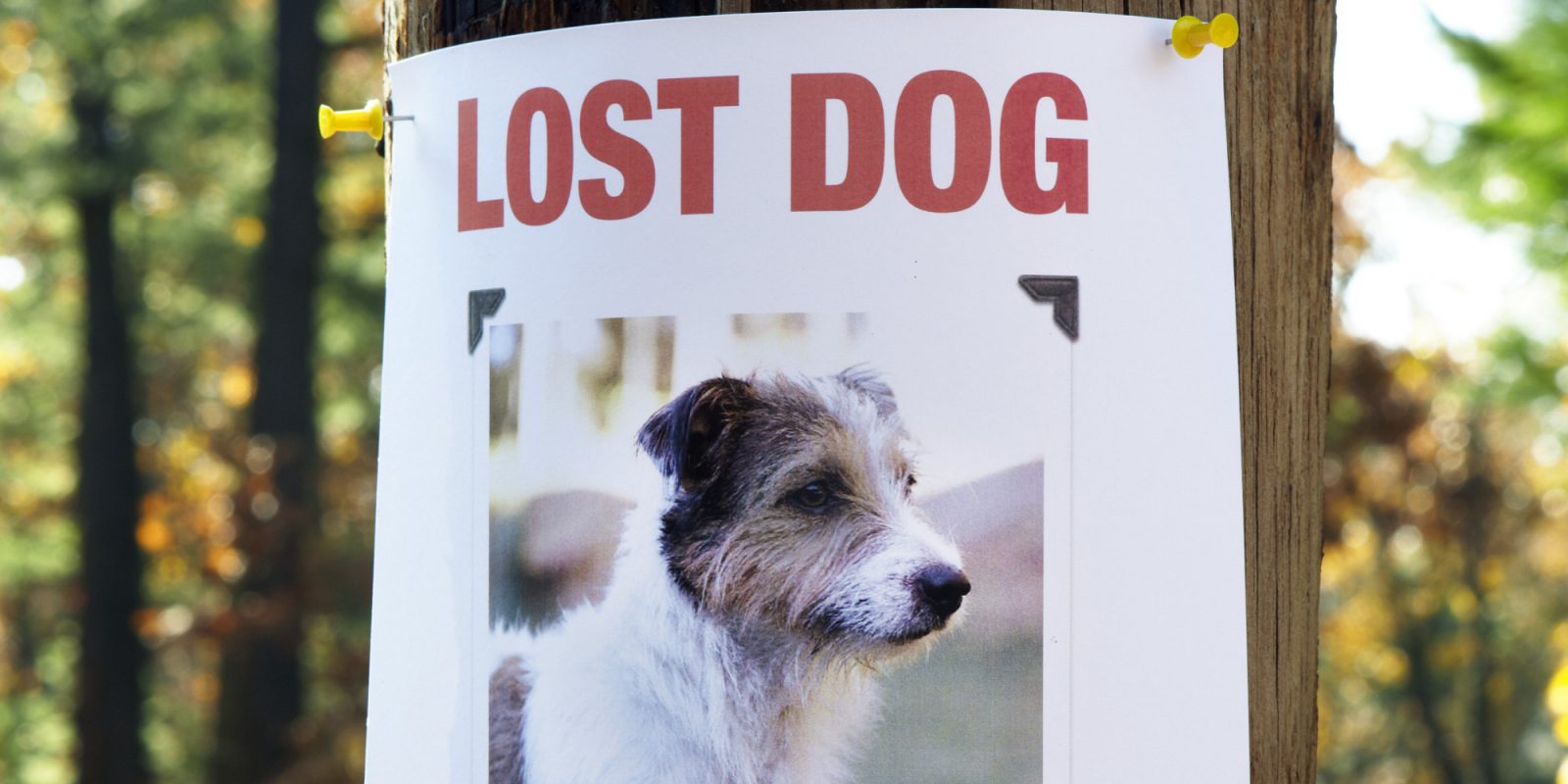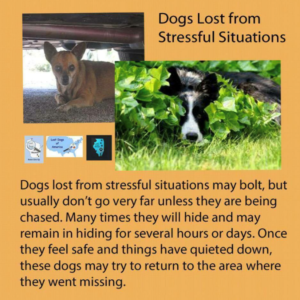Keep Your Pet from Going AWOL (Absent With-Out a Leash)

Each year, over 10 million pets are lost in the United States. However, many are found when the owners take swift and necessary action. Summer can be a particularly scary time for pets who don’t respond well to fireworks and other loud noises or find themselves in strange places due to family travel. For these reasons, July is Lost Pet Prevention Month. I caught up with one of the Humane Society of Loudoun County’s most active volunteers, Jennifer Reed, who shared some useful tips she has picked up from her years of experience getting pets home safe and sound.
In preventing lost pets, owners should make sure to keep their pet safely quartered in the home when there are loud noises nearby such as fireworks, construction, or thunder. These disturbances can send pets into ‘flight mode’ and activate survival tactics that cause them to run for their lives. When this happens, the pet will likely be in a frenzy and not respond to people calling their name.
 If you lose a beloved pet, Jennifer suggests placing 100+ flyers within a 2-4 mile radius of the missing area as quickly as possible. Flyers should include only the most important and clearest information, especially a line of direct contact (such as a cell phone number). The flyers should lead with “LOST DOG/CAT” in bold and large letters, a recent photo of the pet and employ a simple, uncluttered design. If space allows, add “Do not chase or call out” and “Please report sightings right away”.
If you lose a beloved pet, Jennifer suggests placing 100+ flyers within a 2-4 mile radius of the missing area as quickly as possible. Flyers should include only the most important and clearest information, especially a line of direct contact (such as a cell phone number). The flyers should lead with “LOST DOG/CAT” in bold and large letters, a recent photo of the pet and employ a simple, uncluttered design. If space allows, add “Do not chase or call out” and “Please report sightings right away”.
 Another tool to use are Community Facebook groups where you can relay information about your lost pet and allow members of the community to share it and directly comment with any useful information. Jennifer also recommends reaching out to local shelters and informing them of the missing animal. You can make a report with the Loudon County Animal Services at 703-777-0406 or reach out to local animal tracking groups such as Dogs Finding Dogs or Full Tilt Tracking once the first steps to relocate the pet are taken.
Another tool to use are Community Facebook groups where you can relay information about your lost pet and allow members of the community to share it and directly comment with any useful information. Jennifer also recommends reaching out to local shelters and informing them of the missing animal. You can make a report with the Loudon County Animal Services at 703-777-0406 or reach out to local animal tracking groups such as Dogs Finding Dogs or Full Tilt Tracking once the first steps to relocate the pet are taken.
As you wait for information to come in, create an action plan to implement once your pet is sighted. This plan should include establishing a feeding station and feeding routine to keep the pet in the area spotted so that trapping or catching the animal is possible. Be ready to monitor the feeding station with a surveillance camera like game cameras used by hunters. That way, you will know when and if the pet is still in the area and coming to eat.
Although all of these methods are effective and essential, the absolute best way to find a missing pet is to be ahead of the curve and get it microchipped when you adopt. Microchipping allows your veterinarian’s office to look up your pet’s unique ID number. Jennifer adds that you should also ensure that your personal information in the microchipping database remains up-to-date.
Lastly, if you find a missing pet, please bring it to a vet’s office to see if he/she is microchipped.
